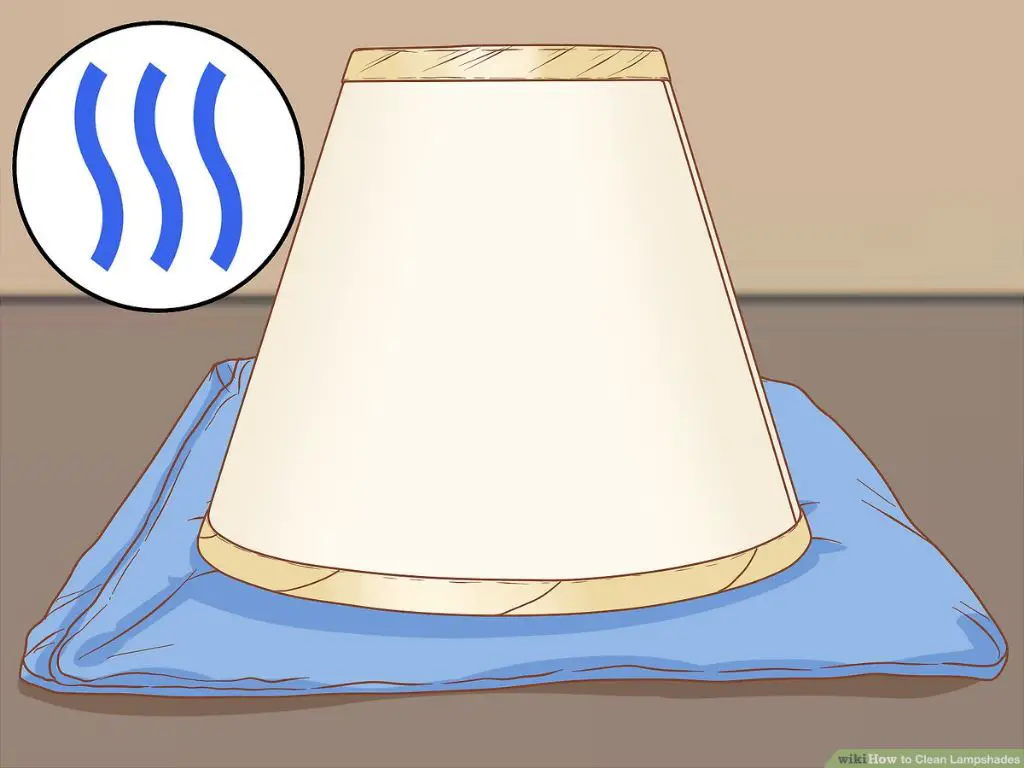Keeping lampshades clean can seem like a daunting task, but with the right techniques and products, it doesn’t have to be. Lampshades attract dust and dirt over time, making the room seem dingy and dull. A good cleaning can restore a lampshade to looking like new again. Here are some tips on the best practices for cleaning fabric lampshades.
Page Contents
Why Clean Lampshades?
There are several benefits to keeping your lampshades clean on a regular basis:
- Improves light output – Dust, dirt, and grime block light from passing through the fabric. Cleaning removes these barriers for brighter illumination.
- Enhances décor – Fresh, clean lampshades look crisp and complement your room’s style.
- Reduces allergens – Dust contains allergens like pet dander, mold, and pollen. Regular cleaning cuts down on allergy triggers.
- Extends lifespan – Built-up dirt wears down the material over time. Keeping shades clean preserves the integrity of the fabric.
Supplies Needed
Cleaning lampshades does not require much. You likely already have these basic supplies in your home:
- Soft brush or duster – For brushing away loose dust and dirt
- Vacuum with brush attachment – For capturing dust and dirt particles
- Dish soap or delicate laundry detergent – For breaking up oily residue
- Clean cloths – Cotton cloths work best
- Spray bottle of water – For dampening fabric as needed
Fabric Considerations
The cleaning method may vary slightly depending on the fabric of your lampshades:
| Fabric | Cleaning Considerations |
|---|---|
| Cotton, linen, polyester | Durable and washable fabrics. Can withstand some scrubbing and saturation with water. |
| Silk | Delicate fabric prone to water spots. Use minimal moisture and gentle brushing. |
| Paper, resin | Fragile materials that require delicate handling. Avoid excessive moisture. |
Cleaning Step-by-Step
Follow these steps for cleaning fabric lampshades:
- Brush loose dust away – Use a soft brush to remove any loose dust or dirt sitting on the surface. This prevent smearing it around later.
- Vacuum – Use the vacuum crevice tool and brush attachment to suction up loose particles. Run it over the entire surface, including pleats and any decorative trim.
- Spot clean – Dampen a clean cloth with water and a small amount of dish soap. Gently blot and wipe any visible spots or stains. Take care not to oversaturate delicate fabrics.
- Wash removable shades – If possible, remove the shade from the lamp base and wash according to the care instructions. Use mild detergent and line dry. Some shades may require professional dry cleaning.
- Deep clean attached shades – Mix a solution of warm water and delicate laundry detergent in a spray bottle. Mist over the surface of the shade and wipe clean with a damp cloth. Work in sections to prevent overly saturating the fabric.
- Rinse and dry – Wipe with a fresh damp cloth to remove any soap residue. Allow the shade to fully air dry before reattaching to the lamp base.
Tips for Special Cases
Certain lampshade materials and styles require some additional care while cleaning:
Pleated Shades
– Use a small vacuum crevice tool to remove dust between pleats.
– Dampen cloth and wring thoroughly before wiping to avoid oversaturation.
– Allow extra drying time for moisture between pleats.
Paper and Resin
– Check care label and do not immerse in water if instruction says dry clean only.
– Use minimal moisture and blot gently rather than rubbing.
– Work in smaller sections to prevent weakening of material.
Decorator Trims
– Avoid excessive moisture around any beads, fringe, or tassels.
– Blot and air dry these sections quickly to prevent water stains.
– Use vacuum crevice tool around decorative elements.
Spider Webbing
– Vacuum and dust frequently to avoid buildup of cobwebs.
– Use crevice tool around hardware and ribs of shade.
– Spot clean any visible spider webs with dampened cloth.
When to Consider Replacing
With regular cleaning, fabric lampshades can last for many years. However, there comes a point when it may need replacement if:
- Fabric is stained, torn, or covered in a sticky film
- Wires or frame are bent, rusted, or broken
- Fabric is faded, yellowed, or brittle
- Pleats or edging are crushed and will not reform
- Shade will not securely attach to the lamp base
For costly designer lampshades or sentimental pieces, a professional lampshade restoration service may be able to replace the fabric or components. Otherwise, completely new lampshades can be ordered from lighting stores and online retailers.
Prevention Tips
To keep your shades looking their best between cleanings:
- Use LED or CFL bulbs that run cooler than incandescent
- Vacuum surface dust regularly
- Move lamps away from air vents or windows where dirt accumulates
- Do not place lamps next to ashtrays or fireplaces where smoke can transfer
- Rotate shades seasonally if you have multiples for a fixture
Conclusion
With this guide, you can keep your lampshades looking bright and new with just a little regular care. Always tailor your cleaning method to the specific fabric and construction of the shade. Be thorough yet gentle to preserve the integrity of the shade. Implement a routine of preventive dusting, vacuuming and seasonal deep cleaning for long-lasting performance. Proper maintenance enhances your décor, keeps allergy-causing dust at bay, and extends the life of these lighting elements.
